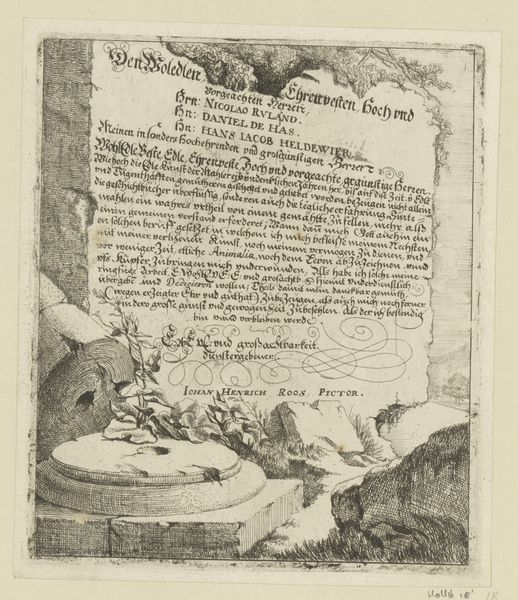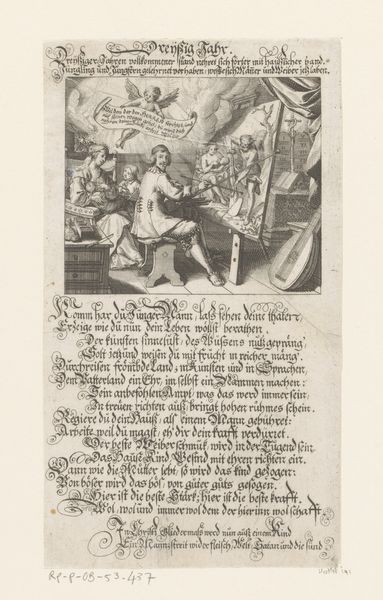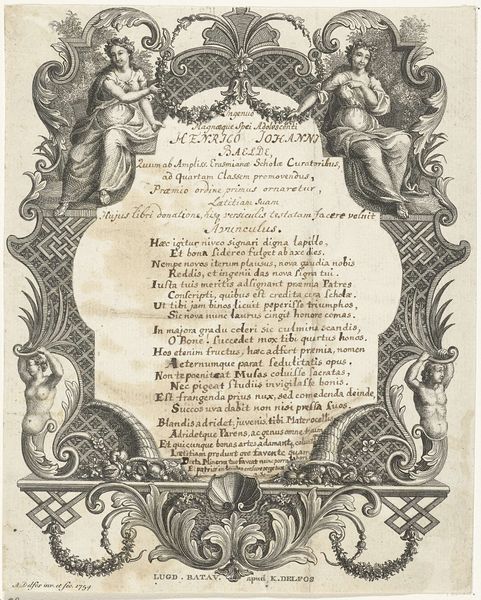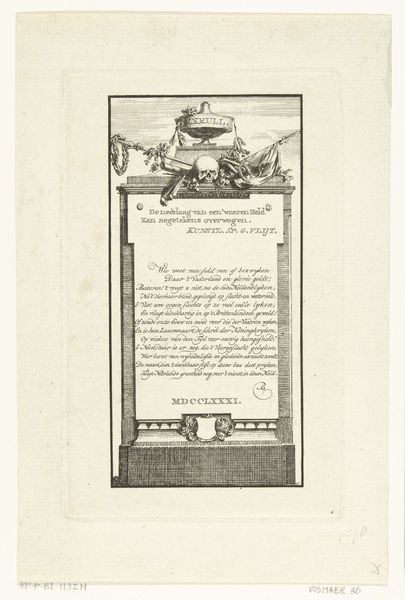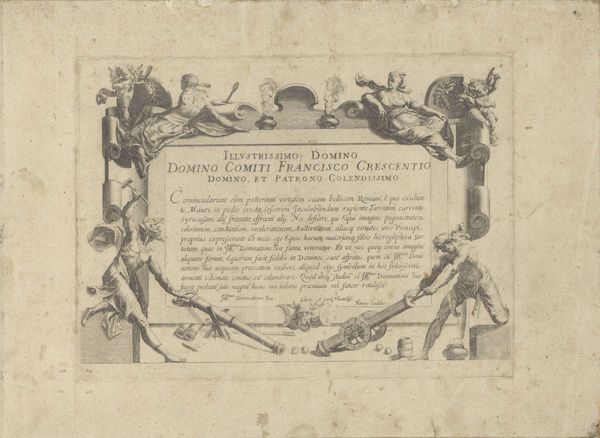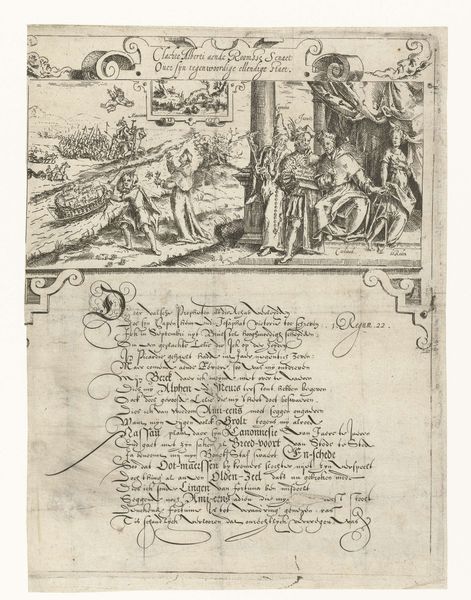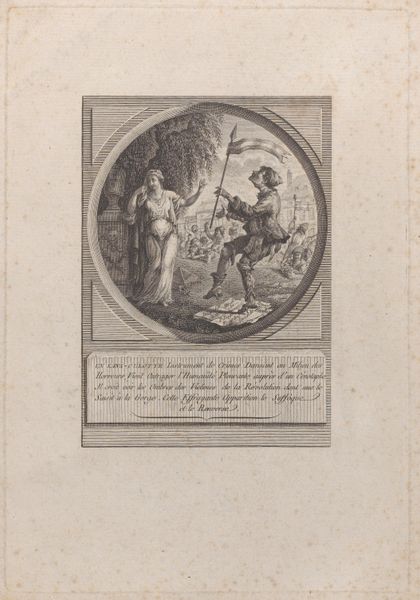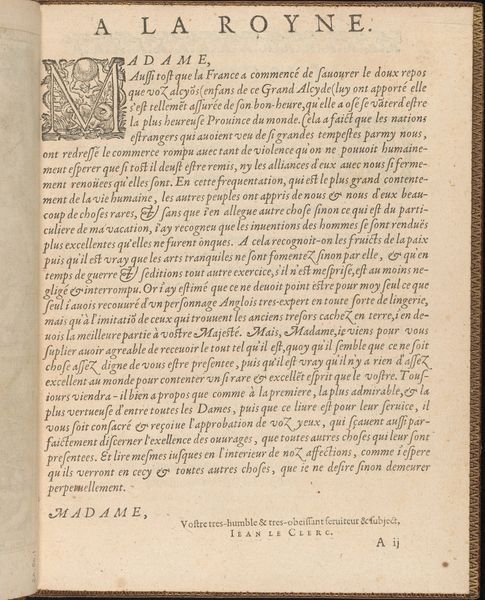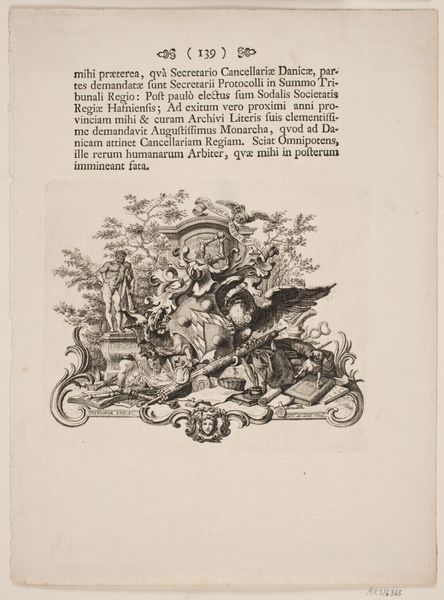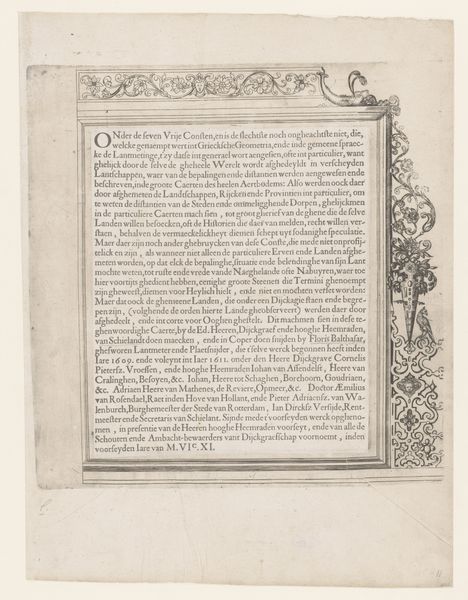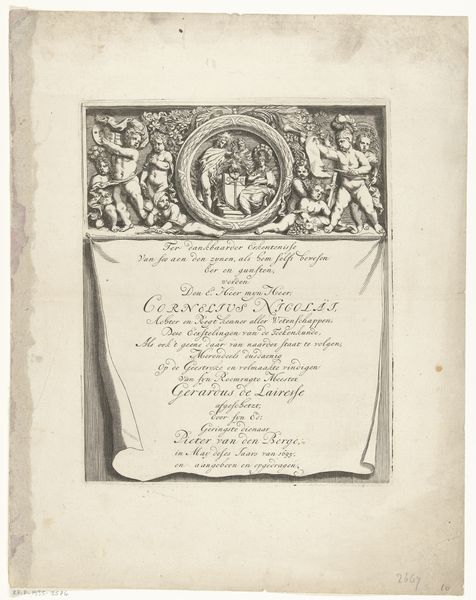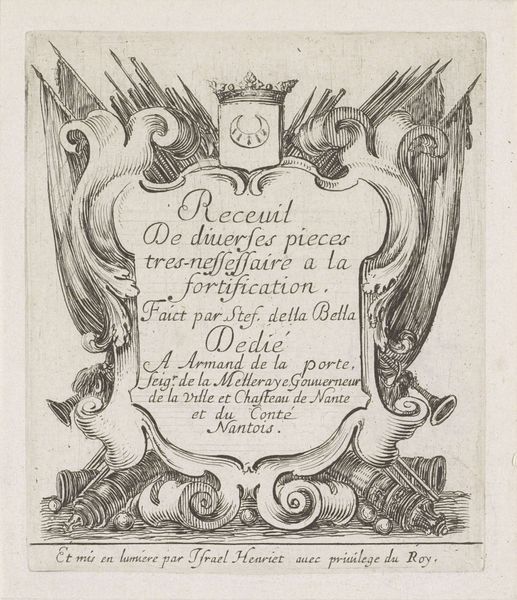
Title Page, from Caravanne du Sultan à la Mecque 1748
0:00
0:00
drawing, graphic-art, print, etching, paper, typography, engraving
#
drawing
#
graphic-art
#
baroque
# print
#
etching
#
paper
#
typography
#
history-painting
#
engraving
Dimensions: 201 × 132 mm (image/plate); 255 × 189 mm (sheet)
Copyright: Public Domain
Curator: Immediately striking is the sheer density of detail in this etching! The artist seems to have reveled in texture. What's your first impression? Editor: Claustrophobia. It feels very crammed and heavy, almost like it’s collapsing in on itself despite being a rather simple title page. It gives the impression of baroque opulence turned oppressive. Curator: "Title Page, from Caravanne du Sultan à la Mecque," dates back to 1748. The artist is Joseph Marie Vien, and the Art Institute of Chicago holds it in its collection. It's an engraving, or perhaps more accurately, a combined etching and engraving, printed on paper, related to a Turkish-themed masquerade performed in Rome. Editor: So, the heaviness makes more sense when considering "masquerade" and the title referencing a Sultan's caravan to Mecca. Think about the cultural fantasies projected onto the Ottoman Empire and Islam at that time. It reflects an orientalist view popular at the time. How much did Vien actually know about such caravans? Curator: Likely not much firsthand. Instead, it relies heavily on symbolism to convey meaning. We see cherubs flanking a crest at the top, swirling clouds. Note the inscription's dedication—it suggests this print served as both documentation and a thank you to a patron, Jean Francois de Troy. It creates a very clear sense of courtly exchange. Editor: Yes, and the density could speak to the Baroque obsession with accumulating detail as a display of power and sophistication. The font, the letter forms, seem to be bursting with information—so the weight makes sense in the broader cultural and social landscape. It reads almost as a document of elite artistic practice of the period. Curator: Precisely. It's fascinating how much information is conveyed in what initially seems a purely decorative piece, isn’t it? Editor: Absolutely. It shifts our perspective from just aesthetics to consider art as historical document that reflects social exchange of that time, or, rather, the values elite society embraced back then. It also offers a glimpse into a bygone vision of cultural Others through their artistic representations. Curator: Well, thanks for drawing those out! It’s really satisfying to tease out all the information, and connect the symbols of one culture, through another, within an entirely distinct historical context. Editor: My pleasure. Every artwork presents a microcosm to reflect upon the bigger, bolder narratives of humanity.
Comments
No comments
Be the first to comment and join the conversation on the ultimate creative platform.
